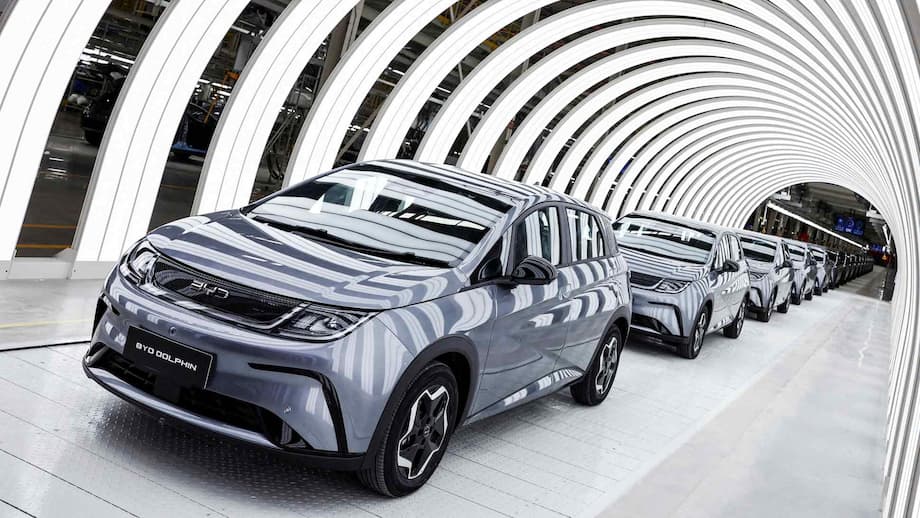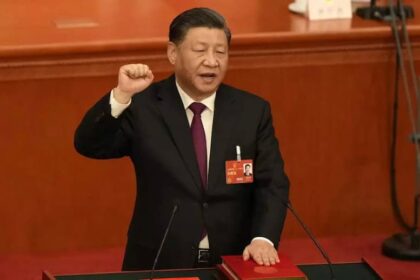Chinese EVs Surge in Southeast Asia: A Market Transformed
In recent years, Southeast Asia has become the new frontier for electric vehicles (EVs), with Chinese automakers leading a dramatic transformation of the region’s automotive landscape. Brands like BYD, Chery, and Geely are capturing market share at a rapid pace, offering affordable electric cars that are reshaping consumer preferences and challenging the dominance of traditional Japanese, American, and European manufacturers.
- Chinese EVs Surge in Southeast Asia: A Market Transformed
- How Chinese EV Makers Captured Southeast Asia
- Why Are Chinese EVs So Affordable?
- Government Policies and Regional Ambitions
- Impact on Gasoline Demand and the Environment
- Competition and the Future: Can Southeast Asia Build Its Own EV Champions?
- Obstacles and Risks: Sustainability, Protectionism, and Local Resistance
- In Summary
Malaysian consumer Vincent Hor’s decision to buy a BYD Atto 3 is emblematic of a broader trend. Once considered a niche product, Chinese EVs are now mainstream in countries like Thailand, Malaysia, Indonesia, and Singapore, thanks to aggressive pricing, government incentives, and strategic investments in local manufacturing. But as Chinese brands race ahead, questions remain about the sustainability of their business models, the impact on local industries, and the region’s ability to move beyond assembly to innovation.
How Chinese EV Makers Captured Southeast Asia
The rise of Chinese EVs in Southeast Asia is the result of a perfect storm: domestic overcapacity and fierce competition in China, rising fuel prices in Southeast Asia, and a global push for greener transportation. As Western markets impose tariffs and restrictions on Chinese EVs, Southeast Asia—with its 600 million people and growing middle class—has become a key target for expansion.
According to Counterpoint Research, over 70% of EVs sold in Southeast Asia in 2024 were from Chinese brands, with BYD alone accounting for nearly half of the market. In Thailand, the region’s largest EV market, Chinese brands command about 80% of sales. Vietnam, Indonesia, and Malaysia have also seen a surge in Chinese EV imports and investments.
Chinese automakers have adopted a multi-pronged strategy to win over Southeast Asian consumers:
- Competitive Pricing: Chinese EVs are often priced significantly lower than Japanese or Western rivals, making them accessible to a wider audience.
- Local Partnerships: Companies like BYD and Geely have formed joint ventures with local conglomerates, mirroring the approach Japanese automakers used decades ago.
- Manufacturing Investments: Billions of dollars have been committed to building factories in Thailand, Indonesia, and Malaysia, creating jobs and reducing reliance on imports.
- Government Incentives: Southeast Asian governments have rolled out tax breaks, import duty reductions, and purchase subsidies to attract investment and boost EV adoption.
As a result, EV sales in the region more than doubled in the first quarter of 2024 compared to the previous year, while sales of traditional gasoline cars declined by 7%.
BYD: The Regional Powerhouse
BYD, China’s top-selling EV maker, has established itself as the undisputed leader in Southeast Asia. Its new plant in Rayong, Thailand, was completed in just 16 months and is expected to produce 150,000 vehicles annually, creating thousands of jobs. In Malaysia, BYD leads the EV market with over 5,400 units sold in the first half of 2025, outpacing both local and Western competitors.
BYD’s strategy includes aggressive expansion into new markets, partnerships with local distributors, and a focus on affordability and advanced battery technology. The company’s presence extends beyond Thailand and Malaysia to Singapore, Indonesia, Vietnam, and even the Philippines, where it leverages value pricing and a broad product range.
Why Are Chinese EVs So Affordable?
The affordability of Chinese EVs is a key factor in their regional success. Several elements contribute to their low prices:
- Economies of Scale: China is the world’s largest EV producer, with a domestic market that accounts for nearly 60% of global electric car sales. Mass production drives down costs.
- Government Support: Chinese automakers have benefited from years of subsidies, research grants, and policy support at home, allowing them to invest heavily in technology and manufacturing.
- Vertical Integration: Many Chinese companies control the entire supply chain, from battery manufacturing to final assembly, reducing costs and increasing efficiency.
- Innovation: Chinese brands have pioneered new battery chemistries, such as lithium iron phosphate (LFP), which are cheaper and safer than traditional lithium-ion batteries.
These advantages allow Chinese EVs to undercut rivals on price while offering competitive features and range. For Southeast Asian consumers, the prospect of saving up to 35% on fuel costs compared to gasoline cars adds to the appeal, especially as governments phase out fuel subsidies.
Government Policies and Regional Ambitions
Southeast Asian governments have played a pivotal role in accelerating EV adoption. Thailand, for example, aims for zero-emission vehicles to make up at least 30% of its automobile output by 2030. The country offers tax holidays, import duty reductions, excise tax cuts, and purchase subsidies to attract investment and encourage consumers to switch to electric cars.
Indonesia, with its vast nickel reserves (a key battery material), is positioning itself as a regional EV battery hub. The government has introduced tax incentives for EV imports and is partnering with Chinese companies to build factories and develop the local supply chain. Malaysia has extended import tax and duty exemptions for built EVs until 2025 and is investing in local manufacturing to prepare for the eventual end of these incentives.
Vietnam, meanwhile, is promoting its own champion, VinFast, which has become the top-selling car brand domestically by appealing to national pride and offering competitive pricing. The government is also subsidizing electricity prices for EV charging stations and considering direct subsidies for EV buyers.
Challenges: Infrastructure, Range Anxiety, and Local Industry
Despite rapid growth, several challenges remain. Range anxiety and limited charging infrastructure are common concerns among consumers. While charging stations are increasing, especially in urban areas, rural coverage is still lacking. Governments and private companies are racing to build more charging points, but progress varies by country.
Another issue is the dominance of assembly over innovation. Most new factories in Southeast Asia focus on assembling imported components, particularly battery packs, rather than manufacturing battery cells or developing proprietary technology. This limits the region’s ability to capture high-value jobs and intellectual property, echoing patterns seen during the rise of Japanese automakers in the 1980s and 1990s.
According to The China-Global South Project, the real test for Southeast Asia is whether it can move beyond assembly to become a center for EV design, innovation, and battery manufacturing. This will require investments in vocational training, technical education, research centers, and high-tech zones, as well as smarter negotiations with foreign investors for technology transfer and local R&D commitments.
Impact on Gasoline Demand and the Environment
The rapid adoption of EVs is already having a measurable impact on Southeast Asia’s energy landscape. According to Kpler, the region’s gasoline demand growth has slowed from a projected 3.1% to 2.6% annually between 2021 and 2030, thanks to the rise of electric vehicles. By 2030, EVs are expected to displace around 100,000 barrels per day of gasoline demand, equal to about 6% of projected consumption.
However, the transition is still in its early stages. EVs account for just 0.6% of the total passenger car fleet in Southeast Asia, and the dominance of gasoline-powered vehicles and motorcycles means that the environmental benefits will take time to materialize. Still, the momentum is unmistakable, and as more consumers switch to electric cars, the region’s reliance on fossil fuels is set to decline.
Competition and the Future: Can Southeast Asia Build Its Own EV Champions?
While Chinese brands currently dominate, the long-term future of Southeast Asia’s EV industry depends on the region’s ability to nurture its own champions. Case studies suggest that success will require a mix of local marketing, foreign technology partnerships, and strong government support.
Vietnam’s VinFast is the most ambitious local player, with its own cell and pack production, but it faces stiff competition from Chinese imports and struggles to expand internationally. Malaysia’s Proton has partnered with China’s Geely to launch a competitively priced EV, leveraging foreign expertise to reduce costs and accelerate development. Other countries are exploring similar partnerships and investing in local R&D.
According to Branding in Asia, coordinated government support is essential for Southeast Asia to move up the value chain. Countries should leverage their unique strengths—such as Thailand’s manufacturing base and Indonesia’s nickel resources—while avoiding policy duplication and fostering regional cooperation. By working together, Southeast Asia can create competitive EV brands that meet domestic demand and reduce reliance on Chinese and Western manufacturers.
New Entrants and Evolving Strategies
The competitive landscape is evolving rapidly. Chinese EV maker Nio plans to debut in Singapore in 2026, introducing its compact Firefly hatchback and potentially its innovative battery swap technology. Other Chinese brands, such as JMEV and Avatr, are also entering the market, while BYD continues to expand its presence and product lineup.
Meanwhile, Japanese automakers, once dominant in the region, are losing ground due to their slow response to the EV trend. American and European brands have a limited presence, though Tesla has made some inroads. Local brands are fighting back with new models and partnerships, but the road ahead is challenging.
Obstacles and Risks: Sustainability, Protectionism, and Local Resistance
Despite their success, Chinese EV makers face several obstacles in Southeast Asia. The sustainability of their aggressive pricing strategies is uncertain, especially as government incentives phase out and competition intensifies. Protectionist policies in Western markets have already forced Chinese brands to pivot to Southeast Asia, but similar measures could emerge in the region if local industries feel threatened.
There is also some consumer resistance to Chinese brands, driven by concerns about quality, data privacy, and national security. In Vietnam, for example, local champion VinFast enjoys strong support, and Chinese brands have struggled to gain traction. In Malaysia and Indonesia, the dominance of gasoline cars and motorcycles, as well as cheap fuel, pose additional challenges.
Finally, the region’s reliance on imported battery cells and technology means that much of the value created by the EV boom flows back to China. For Southeast Asia to truly benefit, governments must negotiate better deals with foreign investors, invest in local innovation, and build the skills and infrastructure needed to compete globally.
In Summary
- Chinese EV makers, led by BYD, have rapidly gained market share in Southeast Asia through aggressive pricing, local partnerships, and manufacturing investments.
- Government incentives and rising fuel prices have accelerated EV adoption, but challenges remain in infrastructure, range anxiety, and local industry development.
- Chinese brands account for over 70% of EV sales in the region, with BYD leading in Thailand, Malaysia, and Singapore.
- The rise of EVs is slowing gasoline demand growth and reshaping the region’s energy landscape, though the transition is still in its early stages.
- Southeast Asia’s long-term success depends on moving beyond assembly to innovation, building local champions, and fostering regional cooperation.
- Obstacles include sustainability of low prices, potential protectionism, consumer resistance, and dependence on imported technology.
- The next decade will determine whether Southeast Asia can become a true hub for electric vehicle innovation or remain an assembly base for foreign brands.












